Fëanor’s Two Handed Sword (#1351)

Fantasy Medieval Sword
In J.R.R. Tolkien’s epic book The Silmarillion, Fëanor was the most powerful elf who ever lived, so powerful that the dark lord Melkor was afraid of his might. Fëanor was also the first of the elves to forge weapons, and created the first battle ready swords that were used by elves to slay their own kin. The Fëanor Medieval sword is an inspirational piece based on Tolkien’s creation. A two-handed weapon, the long, leaf-shaped blade is evocative of the beautiful designs of fantasy elves while the reach and heft make the Fëanor sword highly effective at real-life combat. Make no mistake, this design is not only art – it is a functional weapon, equal of any of our other battle-ready swords.
Blade: 5160 High Carbon Steel. Dual Tempered HRc 60
48-50 at the core
Guard and pommel: Mild Steel
Total length: 48 3/4″
Blade length: 36.5″
Blade width at base: 2 1/4″
Weight: 3 lbs. 10 oz.
Grip Length: 9″
P.O.B.: 3 3/4”
Thickness: 4.6 mm
Width: 36 mm – 55 mm
670.00 USD – 830.00 USD

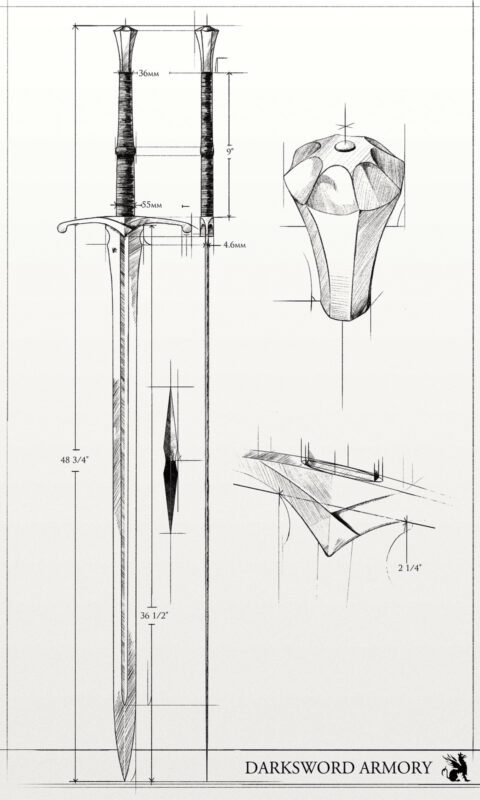
Most people have at least some awareness of J.R.R. Tolkien’s works. For many of us, it began with reading The Hobbit in childhood, and some would go on to read his epic, genre-defining high fantasy trilogy The Lord of the Rings. Many people in the last twenty years have been introduced to Tolkien through Peter Jackson’s film series, arguably one of the best translations of book series to film ever made. And who could forget the 1977 cartoon musical version of The Hobbit, which introduced a generation of children to Bilbo, Gandalf, Gollum, and the magic ring at the center of it all?
However, even people who have read the Lord of the Rings books may be completely unfamiliar with Tolkien’s originally unpublished work The Silmarillion. Which is a shame, as the vast majority of Middle-Earth’s lore – including background information relevant to the Lord of the Rings series – exists within its pages.
The Silmarillion has been called the “Old Testament” of Middle-Earth. It details Middle-Earth’s history from creation right up until the events of the Lord of the Rings. Many of the events in the Lord of the Rings seem to have deep historical meaning for the characters, but that meaning is not always revealed to the readers. In the Silmarillion these mysteries (some of them, anyway) are revealed as a rich and detailed history unfolds.
The creation of Middle-Earth at the hands of Iluvatar, the capital-G God of Tolkien’s world, is not just a singular event. Iluvatar recruits a number of his servants, the Valar (small-g gods), to assist him in managing different aspects of Middle-Earth’s formation and growth. These Valar are by and large benevolent beings, but one of them – Melkor – sees Middle-Earth as an opportunity to rule a world of his own. Melkor is the chief antagonist of the Silmarillion, and Sauron, antagonist of the Lord of the Rings, is his servant.
While the Valar struggle to contain Melkor and his machinations, the Elves – first of the Children of Iluvatar – are born into the world. From a desire to protect these new inhabitants of the world the Valar gather as many of the elves as will come and bring them safely to live in the West, an island called Valinor. In these days there was not yet a Sun and Moon in the world, and Valinor existed under the light of two enormous magical Trees (Laurelin and Telperion). The elves in Valinor were kept safe and separate from the darkness of Middle-Earth and Melkor’s evil.
One of the elves who lived in Valinor was Fëanor. Fëanor (“Spirit of Fire” in Sindarian, the language of the elves) was one of the Noldor, elves who were clever in the crafting of metal and jewls. He was such a mighty craftsman of jewels that he was able to place the light of the Trees into the three Silmarils, gems of such surpassing beauty that all who saw them coveted them deeply. Unfortunately, Fëanor became proud and jealous of his own works. He also listened to the whispers of Melkor convincing him that the Valar would one day ask him to hand over the gems he had created. This was proven to be true when Melkor slew Laurelin and Telperion, ending their light forever, and the Valar approached Fëanor in a last-ditch effort to use the Silmarils to resurrect the Trees. Fëanor denied them, and returned home only to discover that Melkor had attacked. The dark Valar had slain Fëanor’s beloved father and made off with the Silmarils himself.
Fëanor swore revenge, and many elves joined him. The first of the elves to create weapons of war, these weapons were tragically turned on their own kind in an event known as the Kinslaying. Fëanor and his followers
attacked the peaceful coast-dwelling elves, killing many, and stole their ships to return to Middle-Earth to make war upon Melkor for centuries afterward. Many great and terrible things resulted from the wars fought over the Silmarils, and these events changed the face of the world forever. While Fëanor was powerful and the greatest craftsman who ever lived, because of his deeds much evil entered into the world.
Despite the grim origins of the name, the Darksword Armory Fëanor sword is a bright and beautiful weapon. A long, leaf-shaped blade shows the Celtic influence incorporated into Tolkien’s elves, and when sharpened the blade rings with each cut as a sign of its solid construction. The attractive lines of the sweeping guard are perfectly proportioned to the blade, and the scent-stopper pommel provides the necessary balance to make this two-handed sword nimble in the hands. The 5160 blade is resilient and well-tempered, able to withstand the rigors of combat – even combat against the forces of Melkor. Constructed as a two-handed longsword, many European styles of swordplay would be appropriate with this weapon.
The Darksword Armory Fëanor sword is a perfect balance of beauty and functionality, and would look natural on the wall of your home or in the hands of an elf-lord. We trust you will wield it responsibly.
1 review for Fëanor’s Two Handed Sword (#1351)
Add a review Cancel reply
This site uses Akismet to reduce spam. Learn how your comment data is processed.
Related products
Medieval Swords
Broadsword
Fantasy Swords
Arming Swords
Medieval Swords
Longsword
Claymore Swords
HEMA Swords, WMA Swords and Weapons
Broadsword
Medieval Swords
Longsword
Broadsword



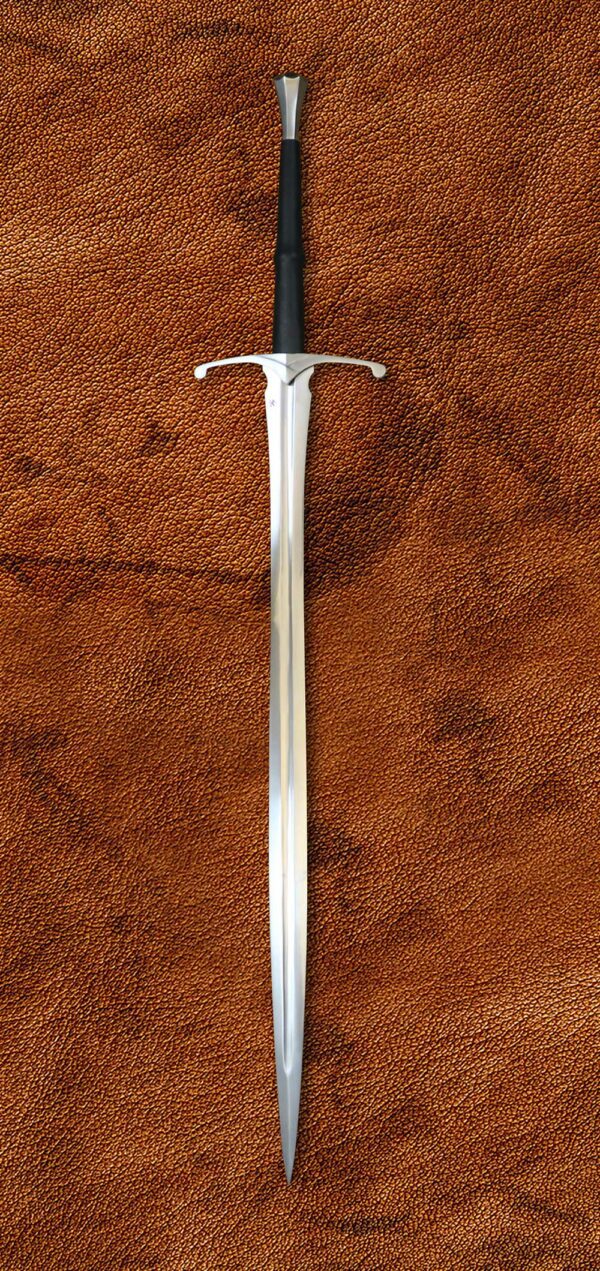
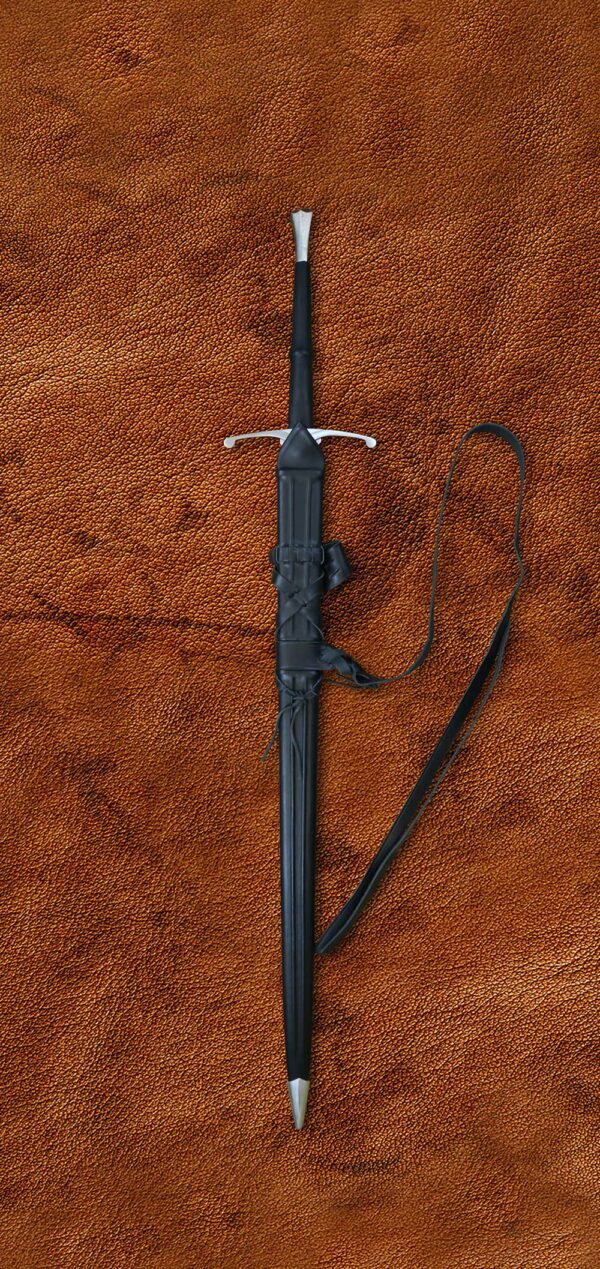
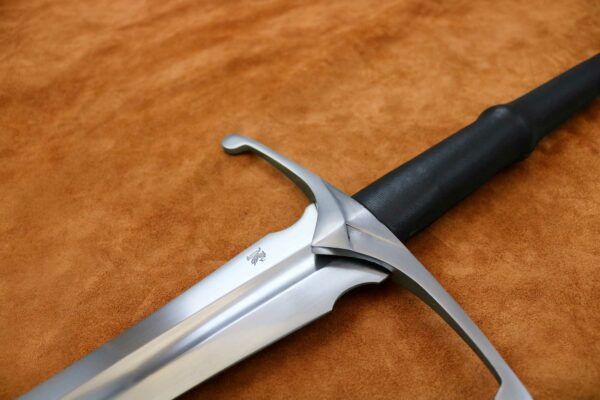
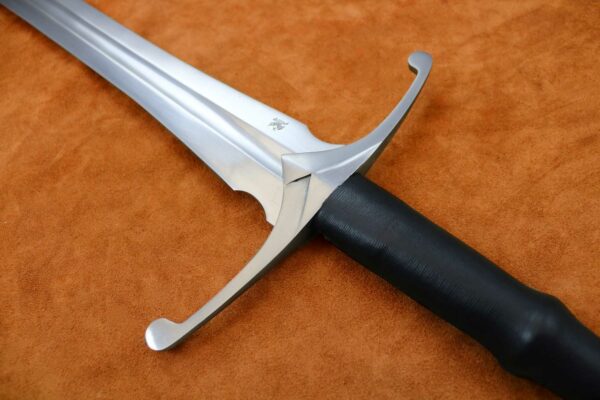







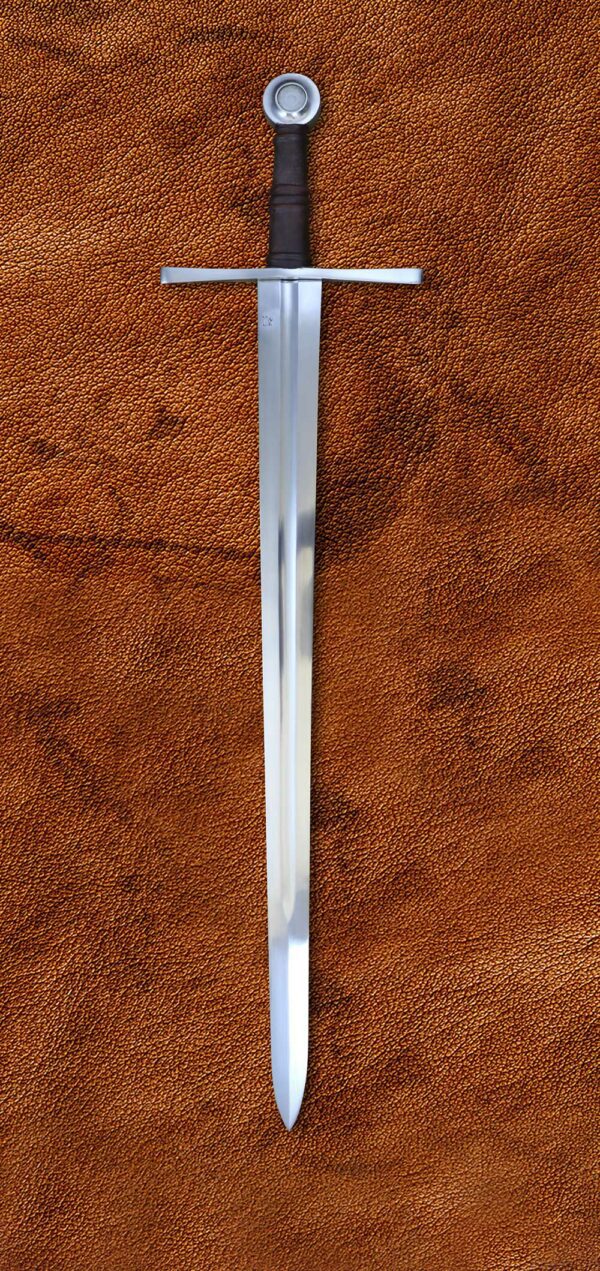
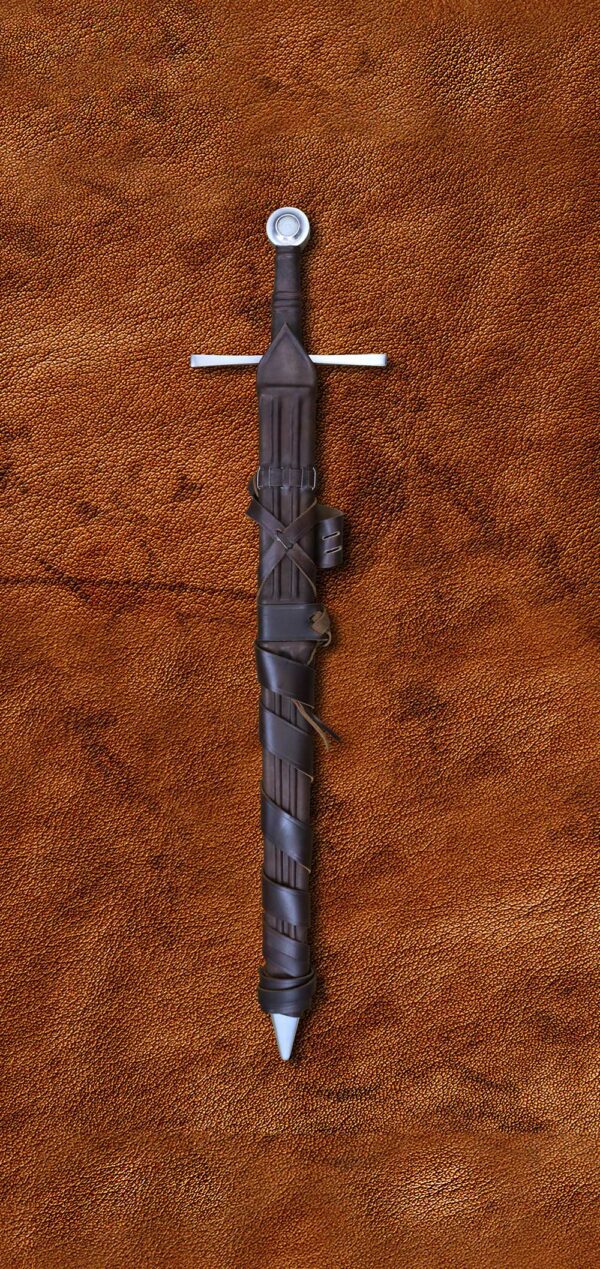
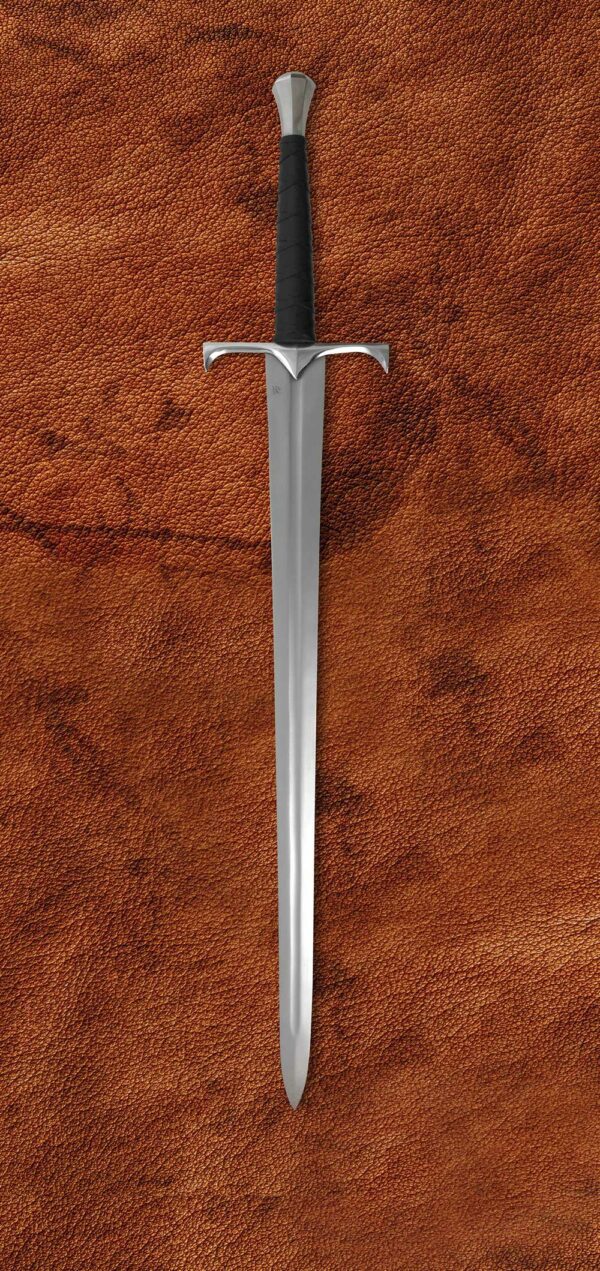
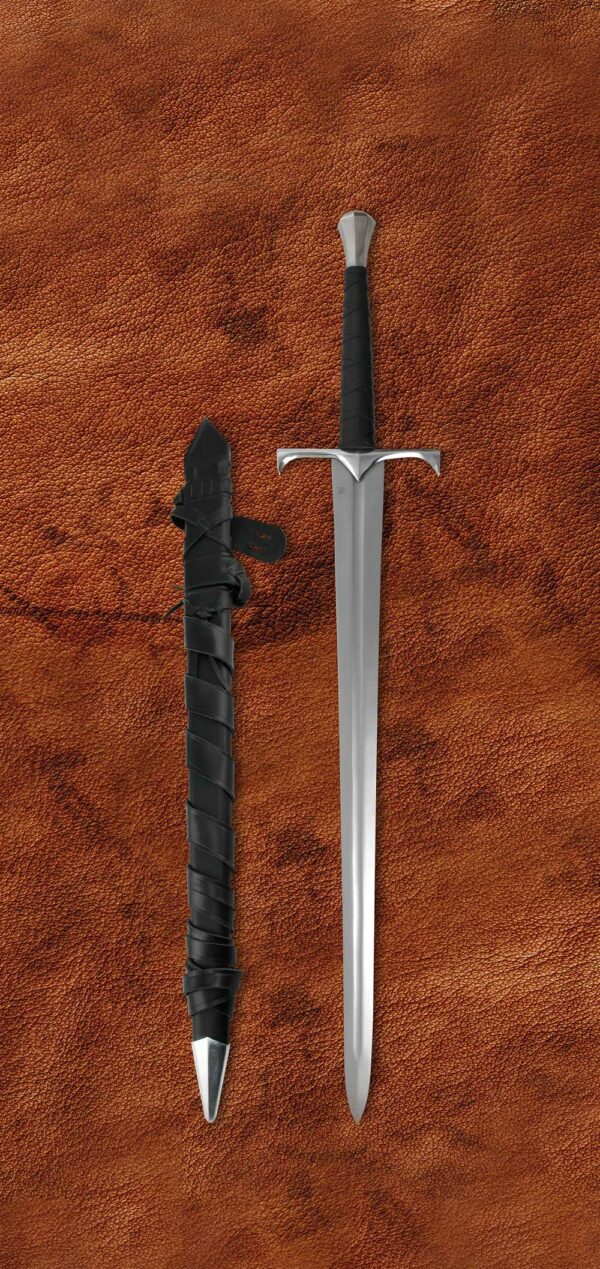
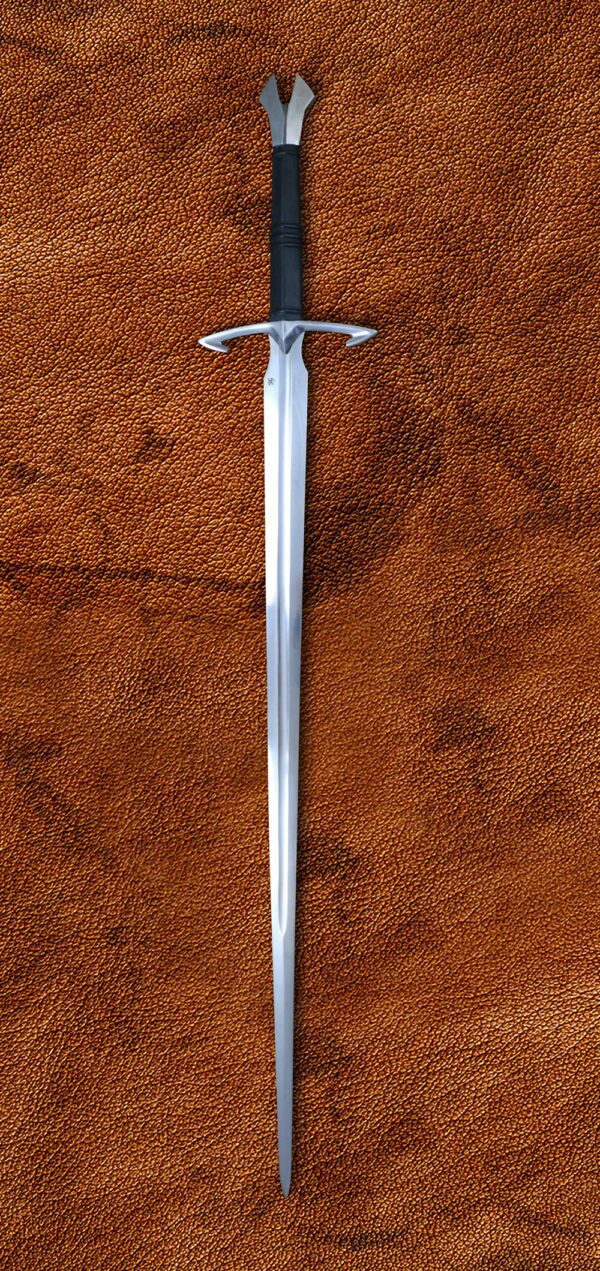
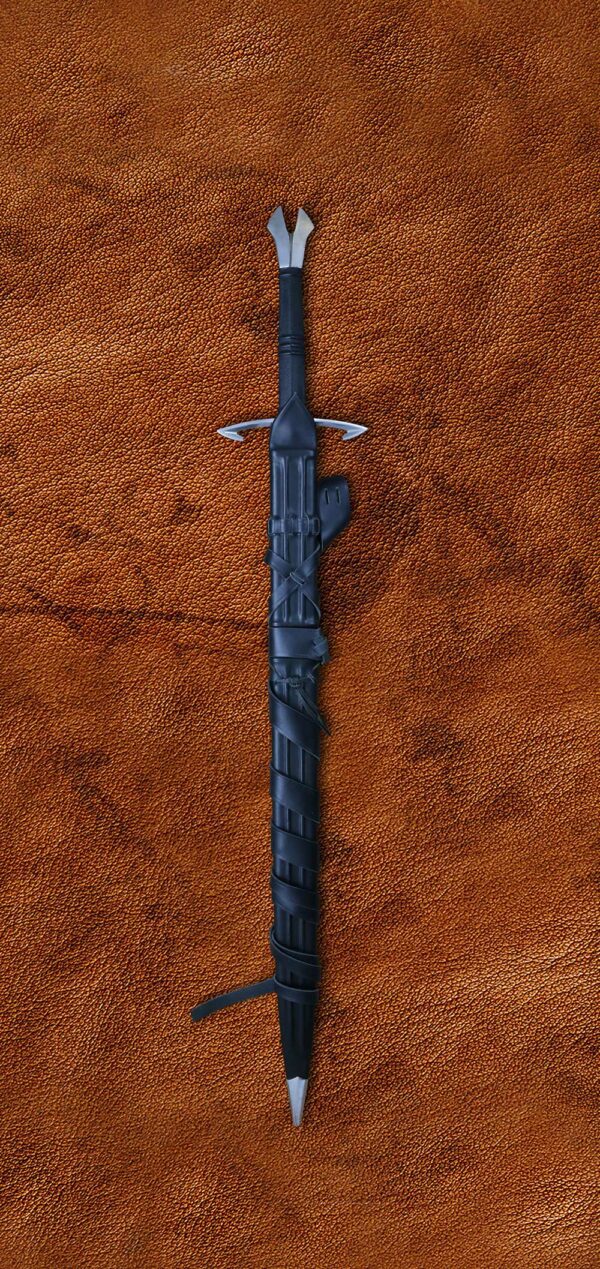
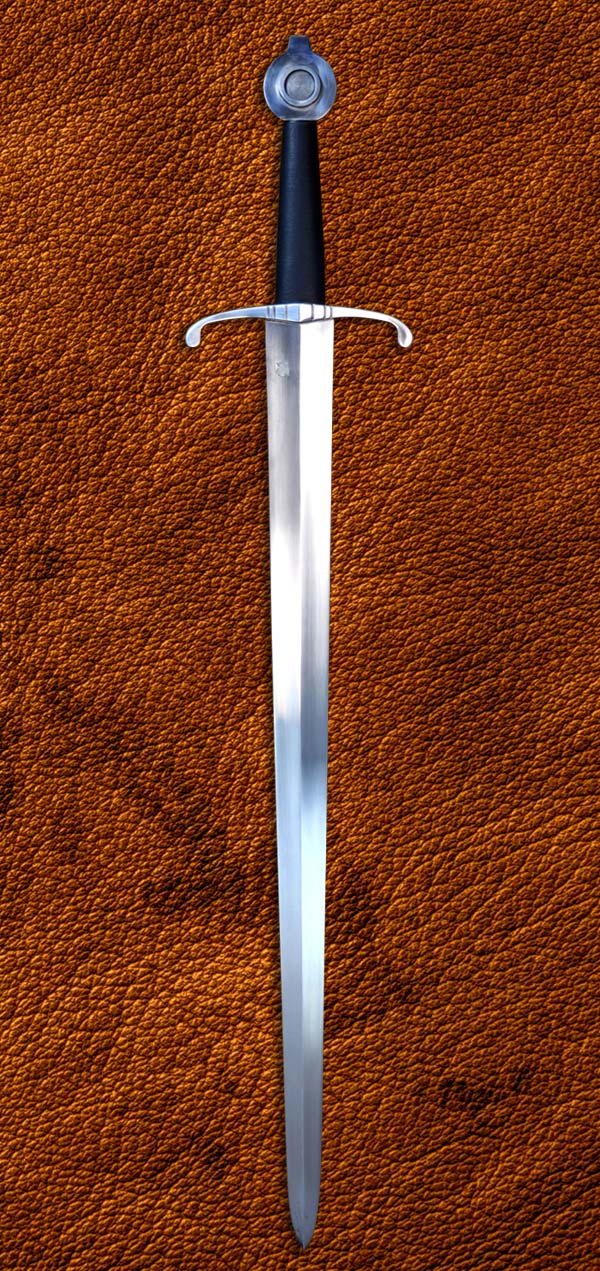
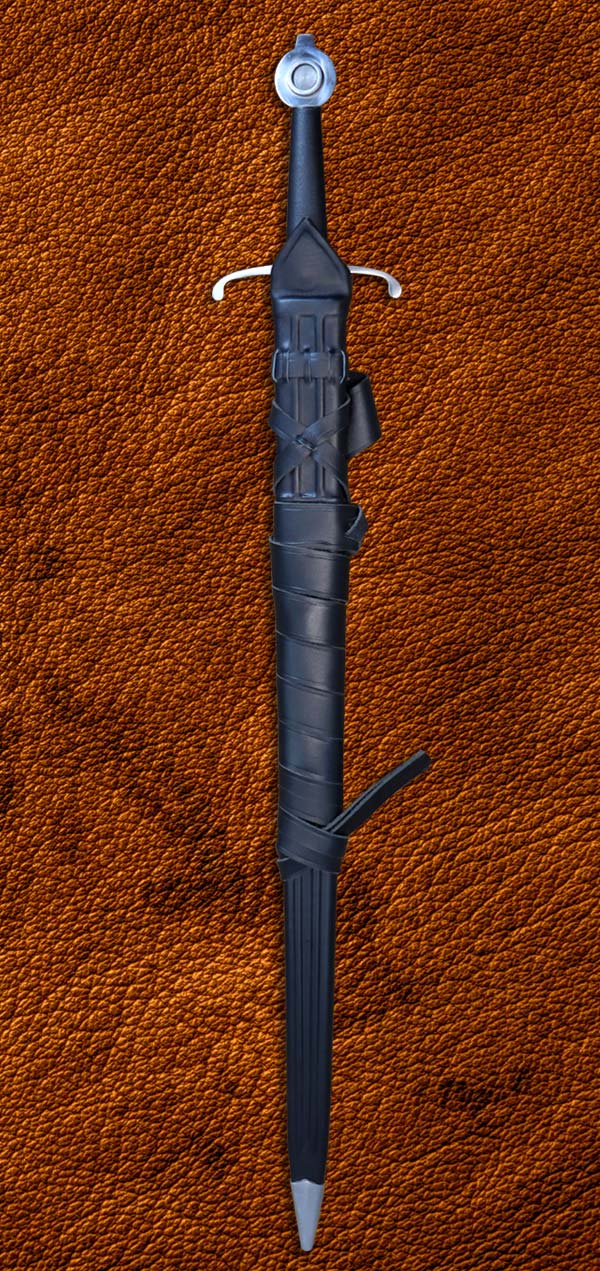
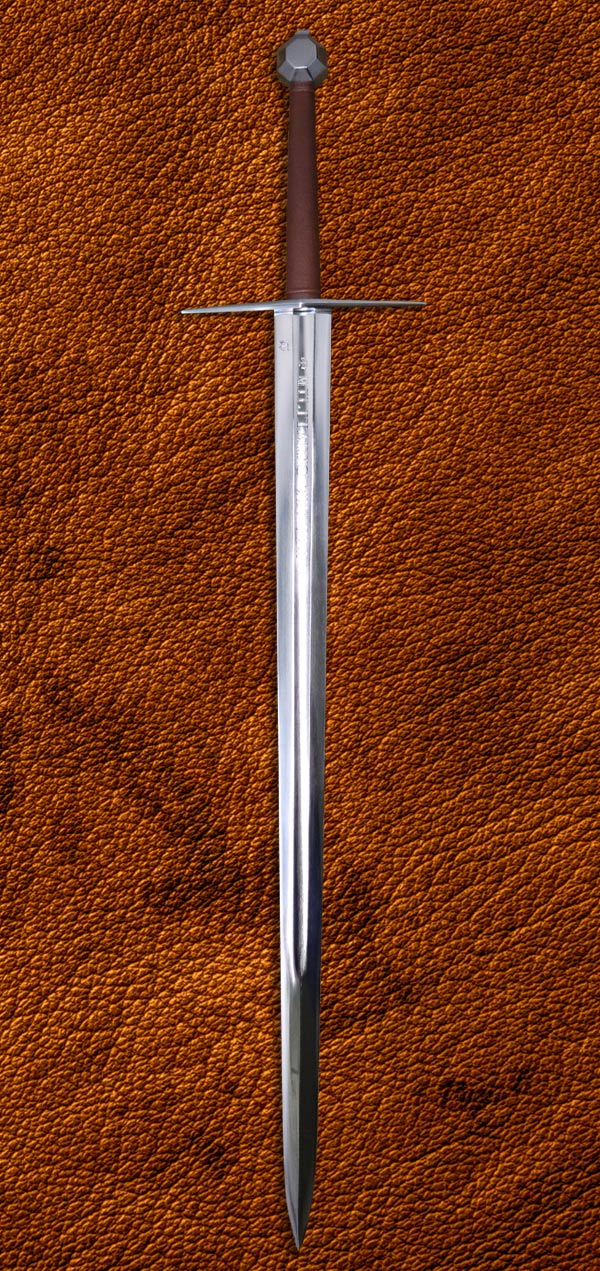
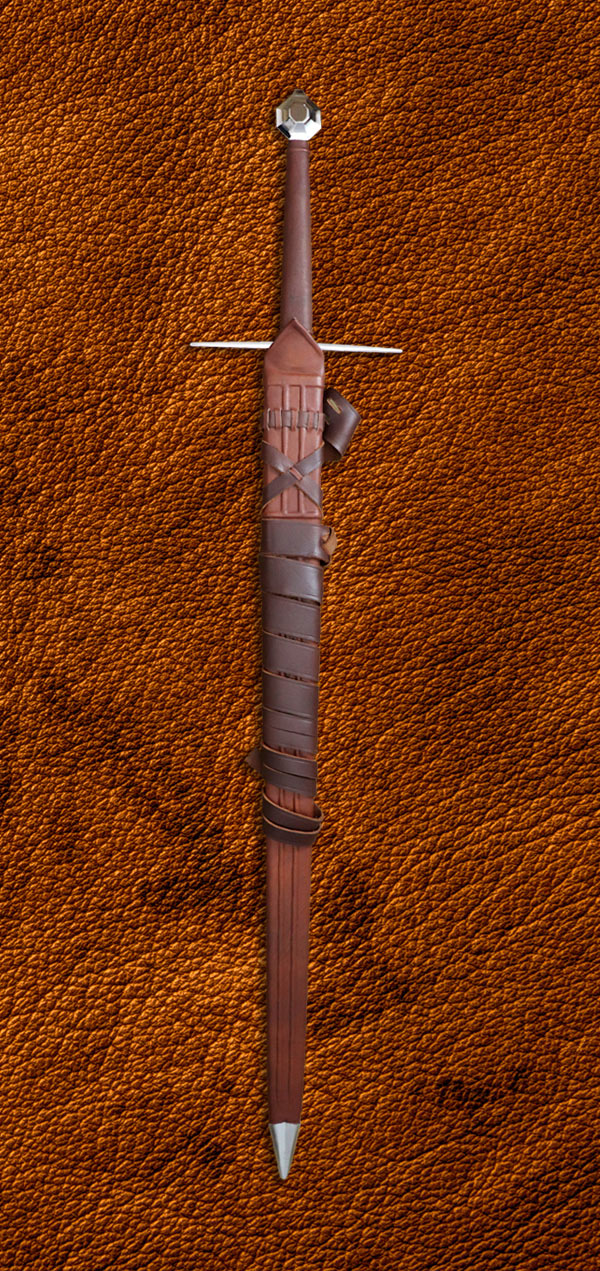

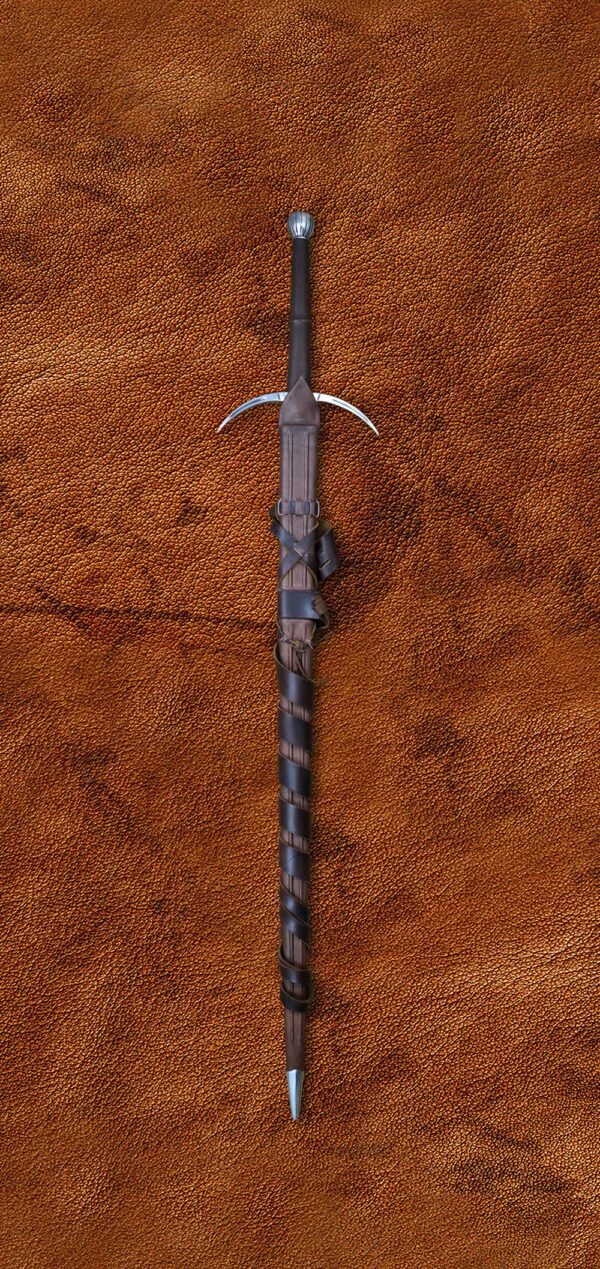
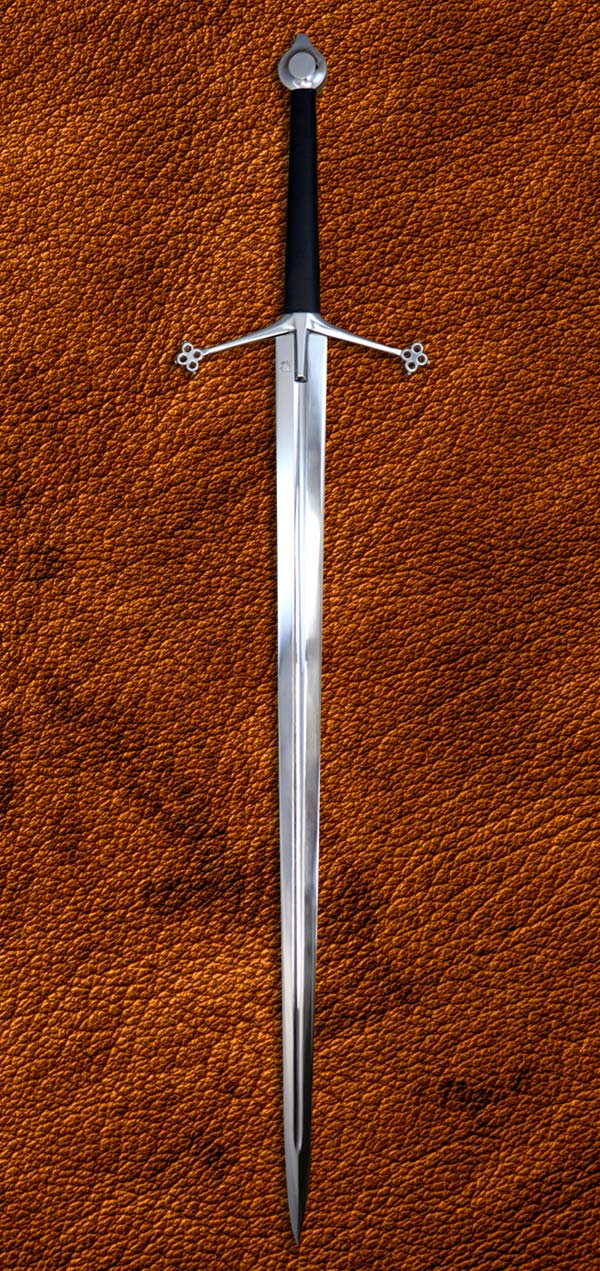
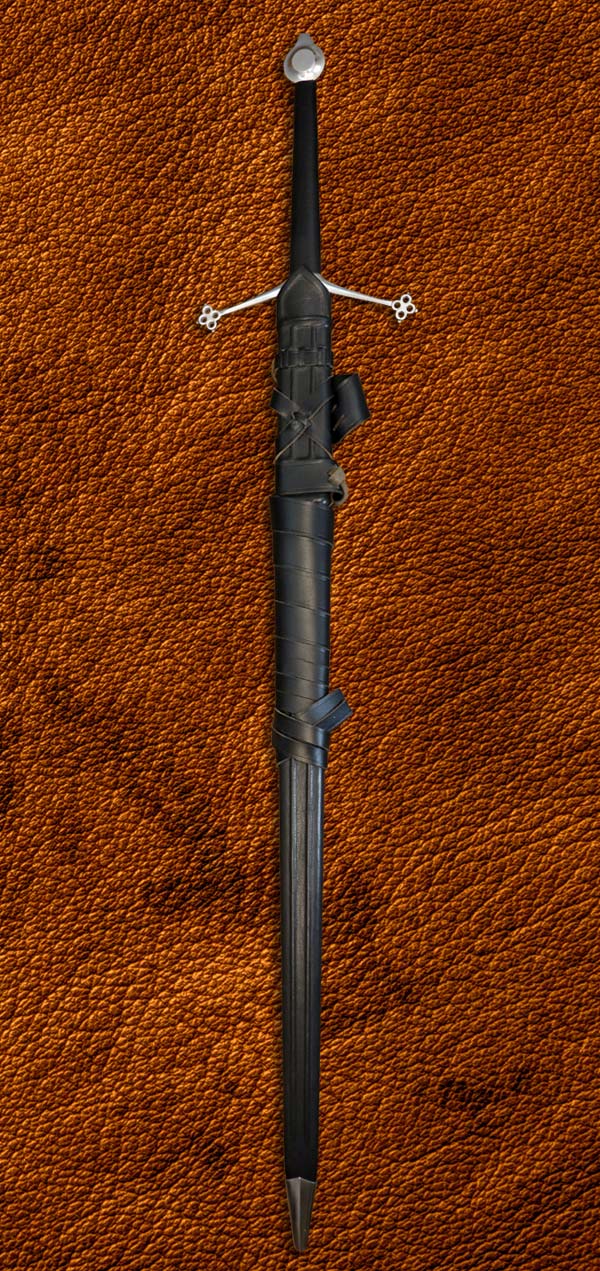

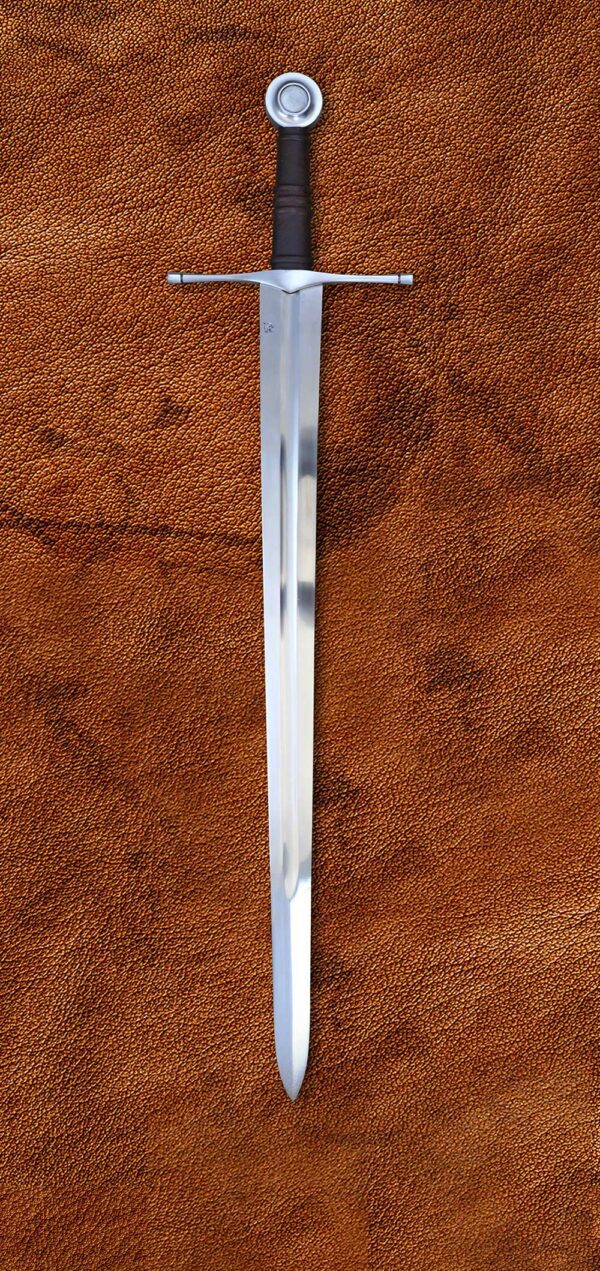
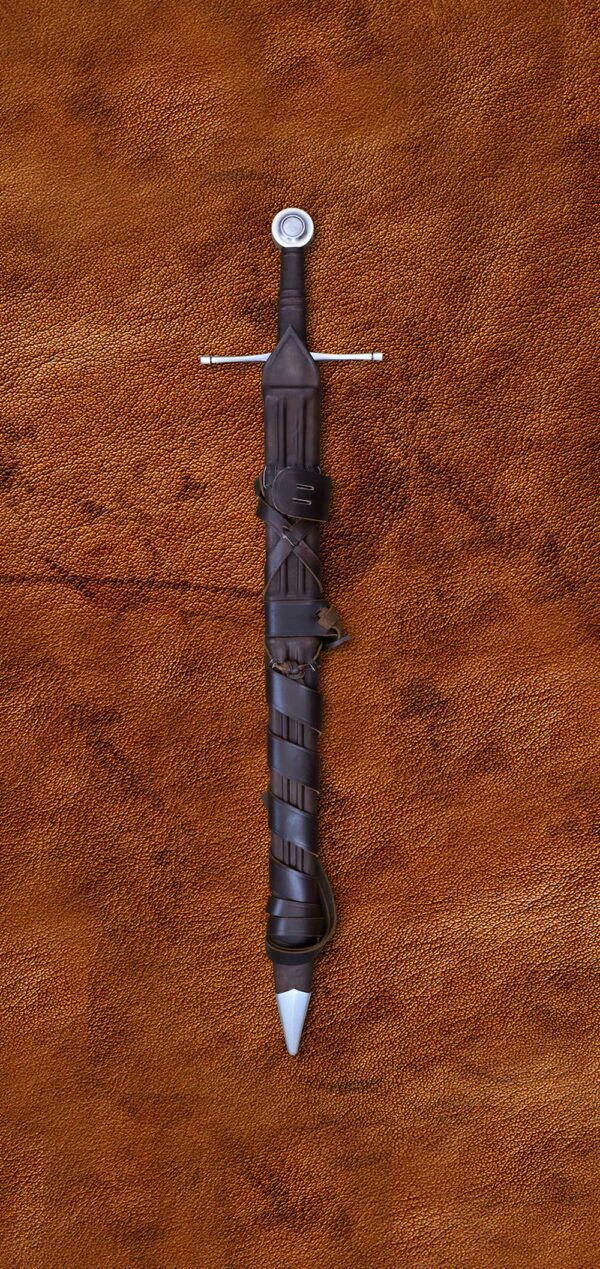
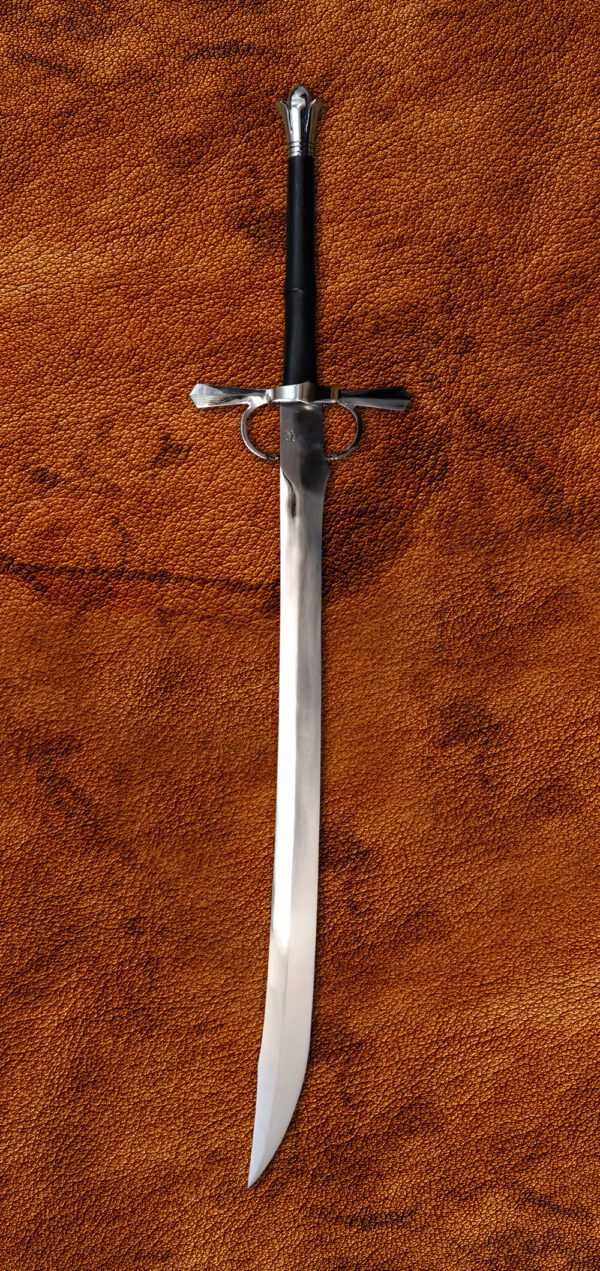

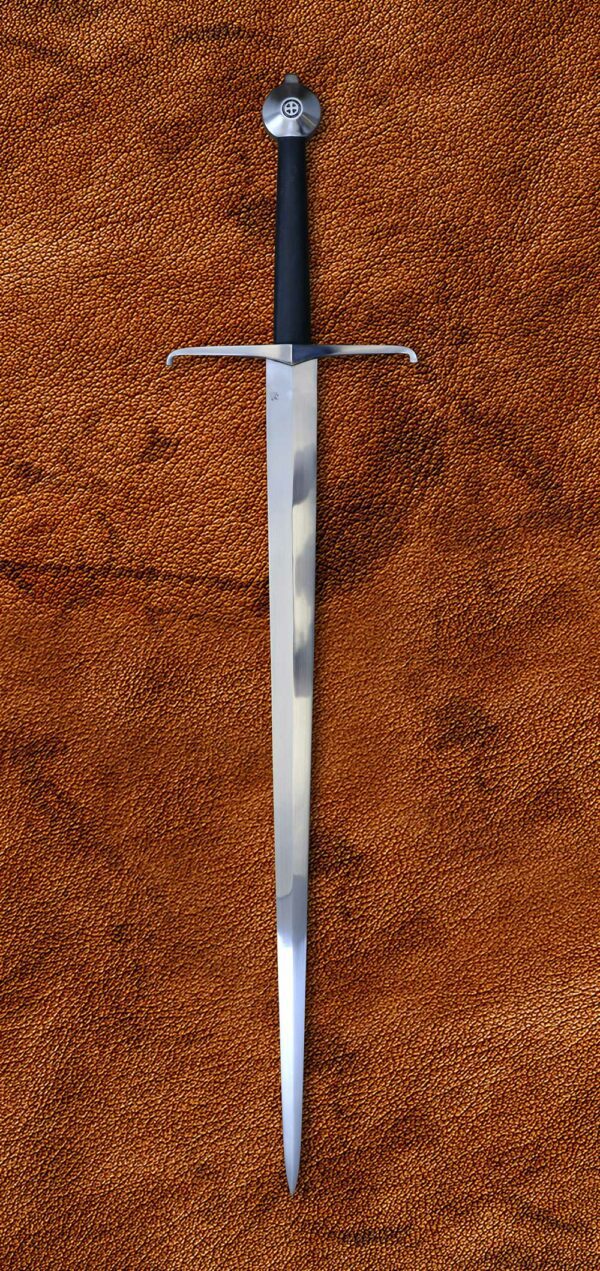
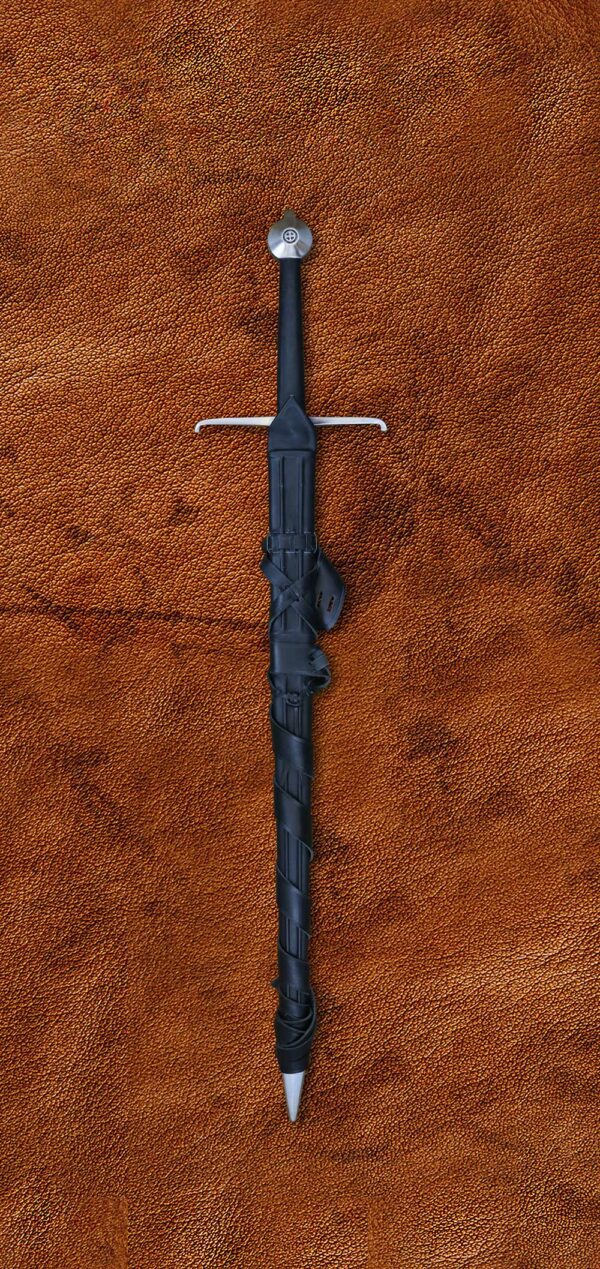
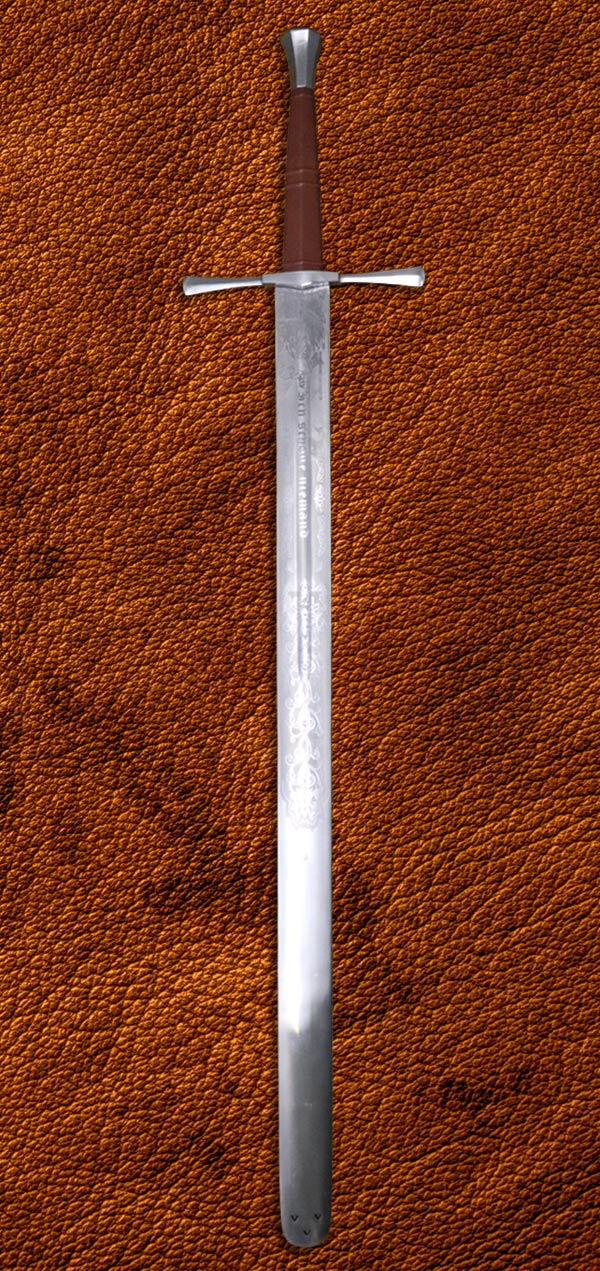
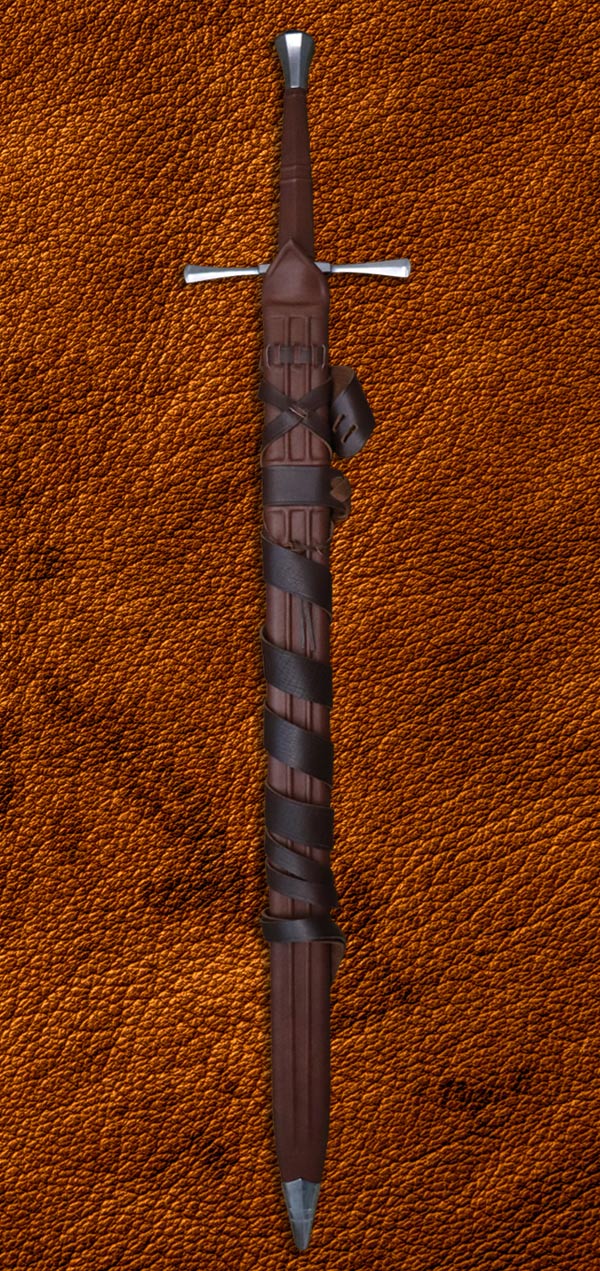
Guy Estes –
I ordered this sword through Kult of Athena, but I wanted to post a review here, as well, as I am absolutely in love with this sword. I have been since you introduced it. Usually when I see a sword I like, I’ll lust after it for a little while, but then the infatuation phase ends and the lust fades and it becomes something that would be nice to have, as opposed to something I must have, but my desire for this sword never wavered.
Upon receiving it I saw that everything was straight and tight. It is far more beautiful in person than it is in pictures, absolutely gorgeous. Point of balance on mine is six inches from the guard, which is perfectly acceptable for a longsword. According to my scale, it weighs 3 pounds, 6 ounces, an excellent weight for a longsword. I subjected it to the British proof test and it easily passed. Everything remained straight and tight. I ordered the unsharpened version. About 30 minutes with an Accusharp got it paper cutting sharp, which as sharp as I want my sword blades to be.
What really blew me away, aside from its beauty, is its handling. The leaf blade design originated in the Bronze Age and continued into the Iron Age short swords. The purpose of the design is to impart greater striking power to short blades. One would expect a leaf-bladed longsword to be blade heavy, which is probably why they never existed in history, but that is decidedly not the case here. The sword is very responsive, its light weight making it very quick and agile, yet the leaf blade also enables it to strike with authority, while the long hilt affords excellent control. Bottom line – this is a superb sword. I’ve always wanted a functional version of Glamdring, and even though Darksword named this one for Feanor, I named mine Glamdring, and she is definitely worthy of the title “Foe Hammer.” I would have total confidence in this sword in battle.